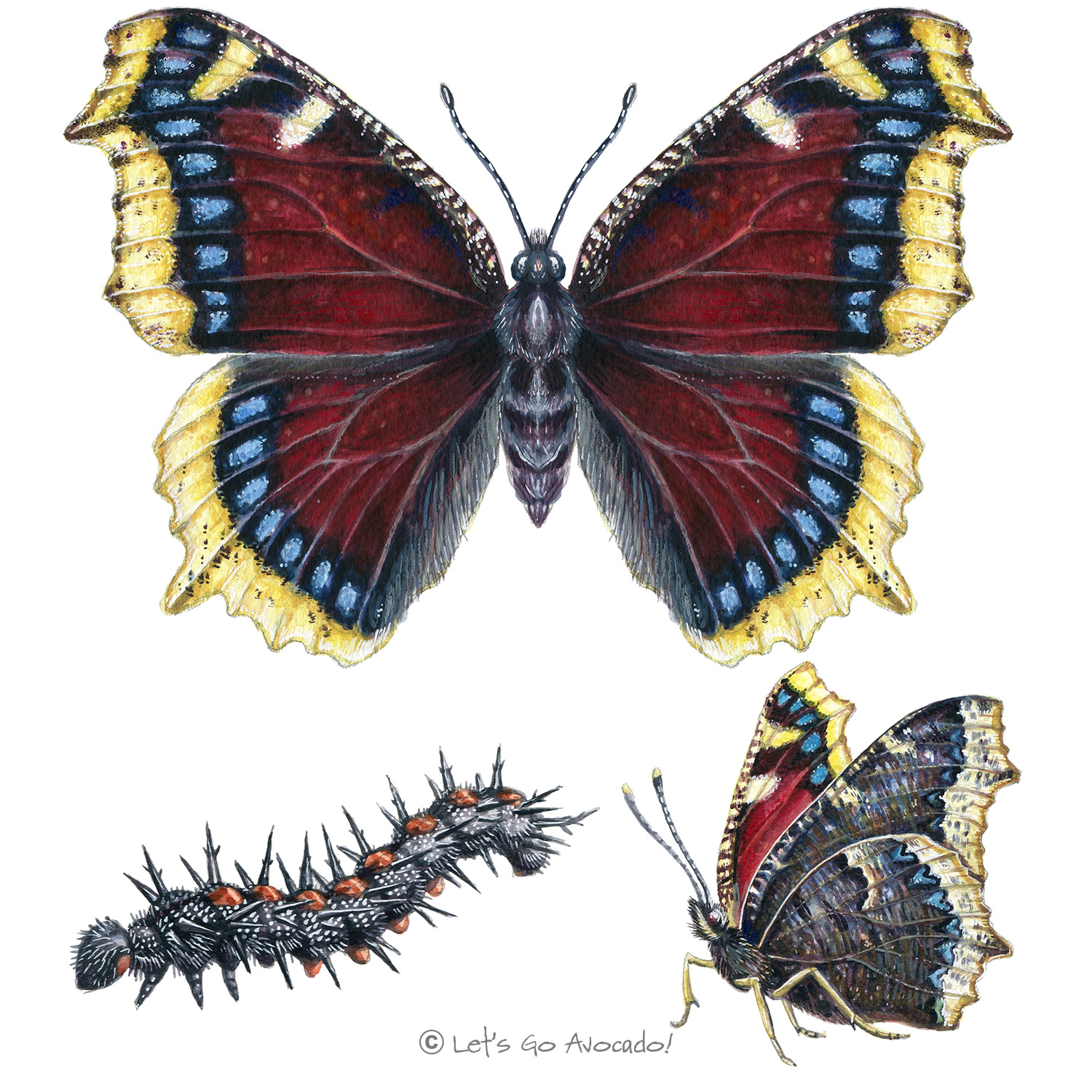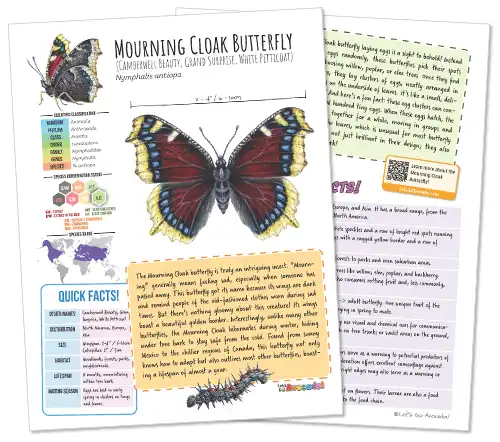

Mourning Cloak Butterfly
Camberwell Beauty, Grand Surprise, and White Petticoat
Nymphalis antiopa
This page may contain affiliate links.
Read our disclosure and privacy policy here.
The Mourning Cloak is a remarkable butterfly known for its velvety wings that resemble a traditional cloak worn during mourning. It’s one of the most widespread and easily recognizable butterflies in North America.
Mourning Cloak Butterfly
Common Name
Mourning Cloak Butterfly
Other Names
Camberwell Beauty, Grand Surprise, and White Petticoat
Latin Name
Nymphalis antiopa
Distribution
This butterfly is found in North America, Europe, and Asia. It has a broad range, from the cold arctic regions to the warmer parts of North America.
Appearance
Caterpillar: Spiky black body covered with white speckles and a row of bright red spots running down the back.
Butterfly: Dark maroon wings with a ragged yellow border and a row of iridescent blue spots.
Size
Wingspan ranges between 2.25 to 4 inches. The caterpillar can grow up to 2 inches in length.
Habitat
Various environments, from woodlands and forests to parks and even suburban areas.
Diet
Caterpillar: Feeds primarily on the leaves of trees like willow, elm, poplar, and hackberry.
Butterfly: Prefers tree sap, especially oak. It also consumes rotting fruit and, less commonly, flower nectar.
Lifecycle
Egg → caterpillar (larva) → chrysalis (pupa) → adult butterfly. One unique trait of the Mourning Cloak is that adults overwinter, emerging in spring to mate.
Communication
Mourning Cloaks, like other butterflies, primarily use visual and chemical cues for communication. Males often set up territories and will perch on tree trunks or sunlit areas on the ground, driving away other intruding males.
Defense Mechanisms
Caterpillar: The spiky appearance and bright colors serve as a warning to potential predators of their unpleasant taste.
Butterfly: Its dark wing coloration offers excellent camouflage against tree trunks, especially when overwintering. The bright edges may also serve as a warning or distraction.
Ecological Importance
They are essential for pollination, albeit less reliant on flowers. Their larvae are also a food source for various predators, thereby contributing to the food chain.
ConservationThe act of protecting and preserving natural resources and the environment. Conservation efforts are important to protect beavers and their habitats. Status
The Mourning Cloak is not considered endangered and is common across its vast range.

There’s a lot to explore right where we are, in our own neighborhoods and backyards! Join us while we get off the couch and explore the everyday wonders of nature, science, space, engineering, art, and anything else we stumble upon during on our adventures.








